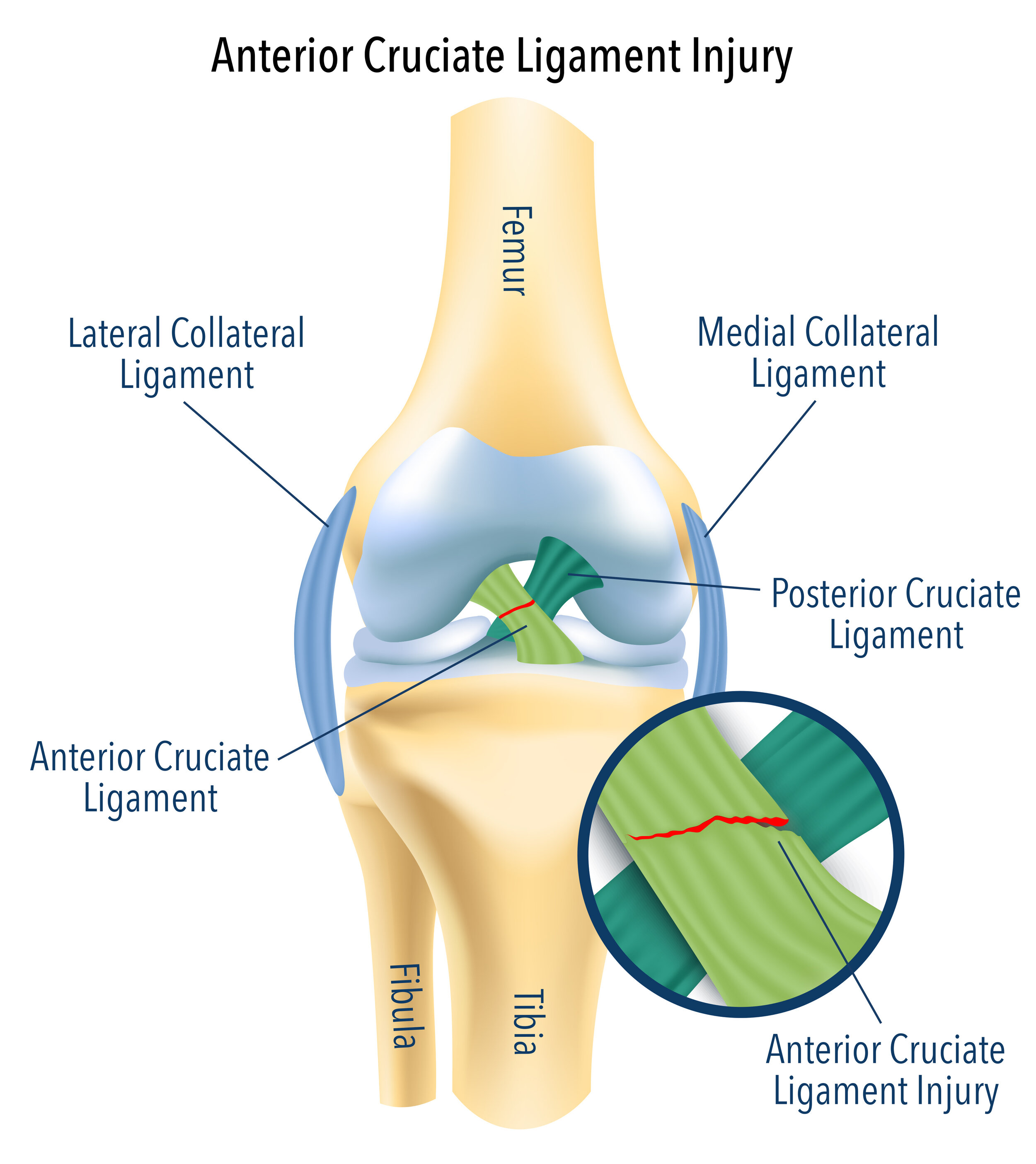ACL Injury
What is the anterior cruciate ligament?
The anterior cruciate ligament (ACL) provides stability to the knee joint. It controls the front to back as well as the rotational movement in the knee.
Athletes that participate in highly demanding sports such as soccer, football, basketball, and netball are more likely to sustain an ACL injury.
What are the symptoms of an ACL injury?
ACL injuries usually occur with a rapid change in direction during sporting activity. Patients feel a ‘popping’ sensation accompanied by rapid onset swelling within the knee joint.
Once torn, the ACL is unlikely to heal without surgery, and the usual translational and rotational control that it provides is lost. This injury can be associated with tears of the meniscus within the knee.
Returning to a pre-injury level of sport is extremely difficult following an ACL rupture, especially if the sport involves rapid changes in direction.
How do you treat an ACL injury?
If an ACL injury is suspected on clinical examination, an MRI scan will be arranged for you. This should confirm the ACL tear and any other injuries within the knee.
Initially, the treatment focuses on controlling the swelling and restoring the range of motion in the knee. Early surgery is not always suitable for this condition and sometimes will result in knee stiffness in the rehabilitation period. Mr Pai will discuss all options available for your particular injury and needs. This may not necessarily involve an operation, but rather a period of physiotherapy to regain strength and stability within the knee.
What does an ACL reconstruction surgery involve?
If surgery is recommended, an ACL reconstruction will be performed. Unfortunately, most ACL tears can’t reliably be repaired, and the patients will require a reconstructive procedure using a graft to provide stability to the knee.
There are different graft choices that include hamstring tendon, patellar tendon, quadriceps tendon, and cadaveric graft (allograft). Mr Pai will discuss the various options and which graft choice is best for you.
The ACL reconstruction is performed using keyhole (arthroscopic) surgery. The graft harvest is performed using a small open incision. Bone tunnels are made in the femur and tibia bones to allow passage of the graft tissue. The graft is held in place using a combination of screws and/or a small metallic button held to the graft via a loop.
Occasionally, another incision may be made on the outside of the knee in order to harvest a band of tissue that protects your new ACL graft while it heals. This is called lateral tenodesis and will provide more rotational control of the injured knee. Mr Pai will examine your knee during your consultation to see if this appropriate in your case. Recent studies have shown that this can reduce the re-injury rate of the ACL graft.
Any associated problems such as meniscal tears and cartilage lesions will be addressed during the same procedure.
How long is the recovery following ACL reconstruction surgery?
Most patients who have ACL surgery get discharged on the same day they have surgery. Occasionally, patients will have to stay overnight till they are comfortable and safe to mobilise with crutches.
Mr Pai will organise outpatient physiotherapy for you. Participation is crucial to your recovery. It is important to follow the instructions you will be given post-operatively. Rehabilitation does not follow a strict timeline and is based on the individual. There are certain goals you will need to achieve prior to progressing to the next phase of rehabilitation.
There will be certain restrictions on activities in the first few months after an ACL reconstruction to help your graft heal. Performing certain activities too early may risk stretching out your new graft or re-rupturing the graft.
Return to play will depend on certain criteria and the type of graft. In general, most will return to full sporting activity at least 12 months after surgery. In order to safely return to play, it is important to achieve good control of the muscles that stabilise the knee joint. Mr Pai will refer you to a physiotherapist to perform return-to-play testing to assess whether you are safe to return to sport.

